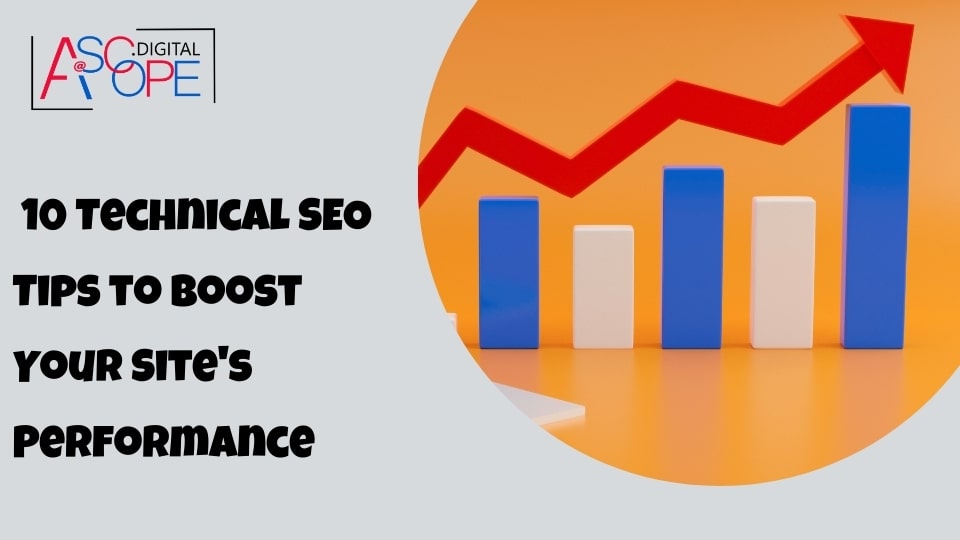Search Engine Optimization (SEO) has become crucial for businesses looking to enhance their online visibility and drive organic traffic to their websites. Among the different facets of SEO, technical SEO stands out as a fundamental aspect that ensures your website is optimized for search engine crawlers and provides a seamless user experience. In this comprehensive guide, we will delve into ten technical SEO tips that can significantly boost your site’s performance.
1. Ensure Mobile-Friendliness
With the increasing number of users accessing websites via mobile devices, ensuring your site is mobile-friendly is no longer optional; it’s imperative. Google uses mobile-first indexing, meaning it predominantly uses the mobile version of the content for indexing and ranking. To make your site mobile-friendly, use responsive design, optimize images, and ensure that all elements are easily navigable on smaller screens. Testing your site on various mobile devices and using Google’s Mobile-Friendly Test can help identify and rectify issues.
2. Optimize Page Speed
Page speed is a critical ranking factor that affects both user experience and search engine rankings. Slow-loading pages can lead to higher bounce rates and lower engagement. To optimize your page speed, minimize HTTP requests, compress images, leverage browser caching, and use a Content Delivery Network (CDN). Tools like Google PageSpeed Insights and GTmetrix can provide detailed insights and recommendations for improving your site’s loading times.
3. Implement HTTPS
Security is a priority for both users and search engines. Implementing HTTPS (Hypertext Transfer Protocol Secure) ensures that data transmitted between the user and the server is encrypted and secure. Google considers HTTPS as a ranking signal, and sites with HTTPS are favored over non-secure ones. Obtain an SSL certificate from a trusted Certificate Authority (CA) and ensure all pages on your site are accessible over HTTPS.
4. Fix Crawl Errors
Crawl errors occur when a search engine tries to access a page on your site but fails. These errors can hinder search engines from indexing your content properly. Use tools like Google Search Console to identify and fix crawl errors. Common issues include broken links, server errors, and incorrect URLs. Regularly monitoring your site for crawl errors ensures that search engines can efficiently access and index your content.
5. Optimize XML Sitemaps

An XML sitemap is a file that lists all the important pages on your website, helping search engines understand your site structure and discover new content. Ensure your XML sitemap is properly formatted and includes all relevant URLs. Submit your sitemap to search engines via Google Search Console and Bing Webmaster Tools. Regularly update your sitemap to reflect any changes to your site’s structure or new content.
6. Use Structured Data Markup
Structured data markup, also known as schema markup, helps search engines understand the content on your site better and can enhance your search result listings with rich snippets. Implement structured data for elements like articles, reviews, products, and events. Use Google’s Structured Data Markup Helper to create and test your schema markup. Rich snippets can improve your click-through rates by providing users with more detailed information directly in the search results.
7. Optimize URL Structure
A clean and organized URL structure is crucial for both user experience and search engine optimization. Use descriptive, keyword-rich URLs that clearly convey the content of the page. Avoid using long, complex URLs with unnecessary parameters. Implementing a consistent URL structure across your site helps search engines crawl and index your pages more efficiently. Ensure that your URLs are easily readable by both users and search engines.
8. Implement Canonical Tags
Canonical tags help prevent duplicate content issues by specifying the preferred version of a page when there are multiple URLs with similar content. Duplicate content can dilute your SEO efforts and negatively impact your rankings. By using canonical tags, you inform search engines which version of the content should be indexed and ranked. This is particularly useful for e-commerce sites with similar product pages or sites with multiple versions of the same content.
9. Improve Internal Linking
Internal linking is the practice of linking to other pages within your website. Effective internal linking helps distribute link equity across your site, improve crawlability, and enhance user navigation. Use descriptive anchor text for internal links and ensure that they lead to relevant and valuable content. A well-structured internal linking strategy can help search engines discover new pages and understand the relationship between different pieces of content on your site.
10. Regularly Audit Your Site
Conducting regular SEO audits is essential to maintaining and improving your site’s performance. An SEO audit involves analyzing various aspects of your site, including technical SEO, on-page SEO, and off-page SEO factors. Use tools like SEMrush, Ahrefs, and Screaming Frog to perform comprehensive site audits. Regular audits help identify issues, track your progress, and ensure that your site is aligned with the latest SEO best practices.
Enhancing Website Usability and Speed
A crucial aspect of technical SEO is ensuring your website is both user-friendly and fast-loading. Users expect websites to load quickly, and search engines prioritize these sites in their rankings. Start by optimizing your images and utilizing a content delivery network (CDN) to reduce load times. Compressing images and files can significantly enhance your site’s speed. Additionally, improving website usability involves making your navigation intuitive and ensuring that your site is mobile-friendly. These changes make it easier for users to find what they need, keeping them on your site longer and reducing bounce rates. Investing in these technical SEO improvements will result in a better user experience, thus improving traffic and sales for your website. Read more on the other reasons why your website isn’t getting traffic. By focusing on usability and speed, you not only cater to your audience but also align with search engine algorithms, boosting your site’s overall performance.
Conclusion
Technical SEO is a crucial component of a successful SEO strategy. By implementing these ten technical SEO tips, you can enhance your site’s performance, improve user experience, and boost your search engine rankings. Stay proactive in monitoring and optimizing your site to stay ahead of the competition and ensure long-term success in the digital landscape. Remember, SEO is an ongoing process, and regular updates and optimizations are key to maintaining and improving your site’s performance



